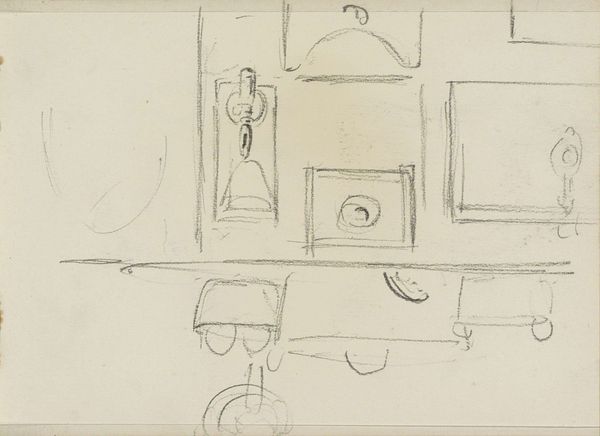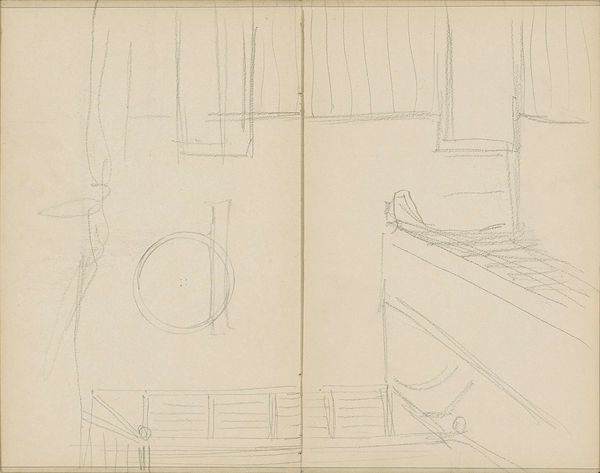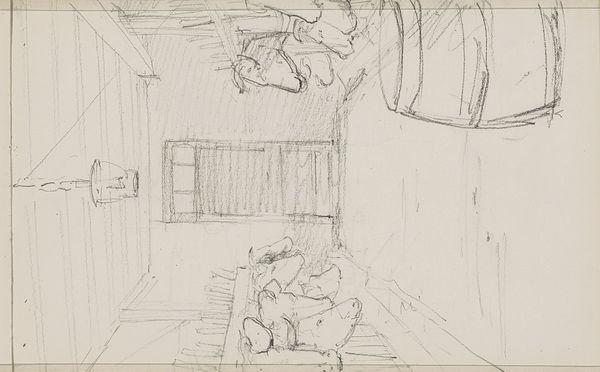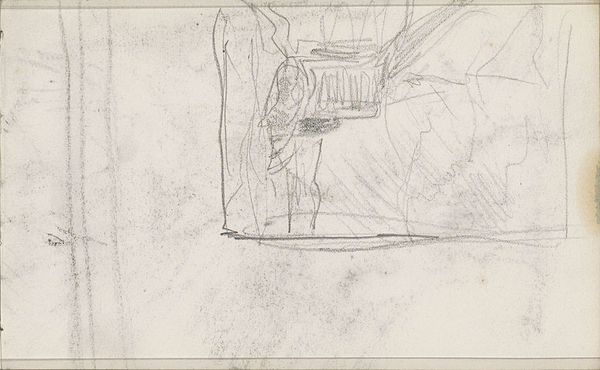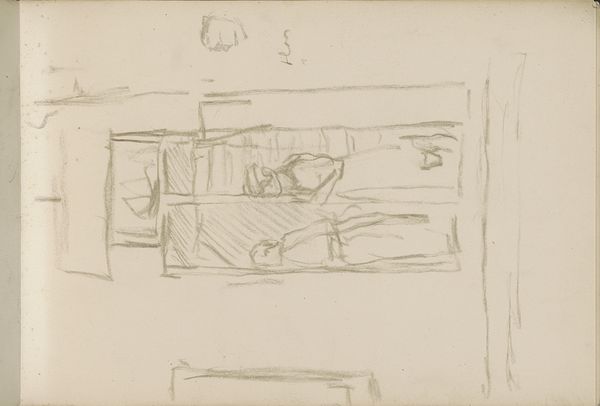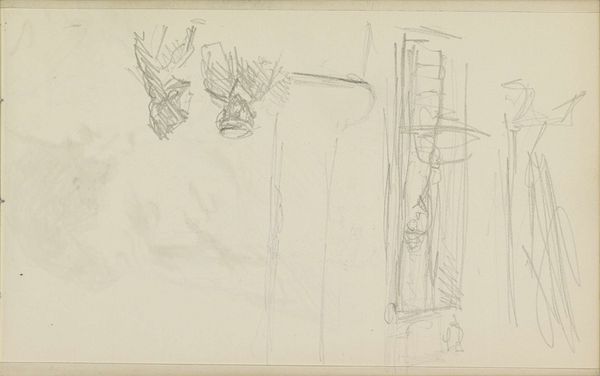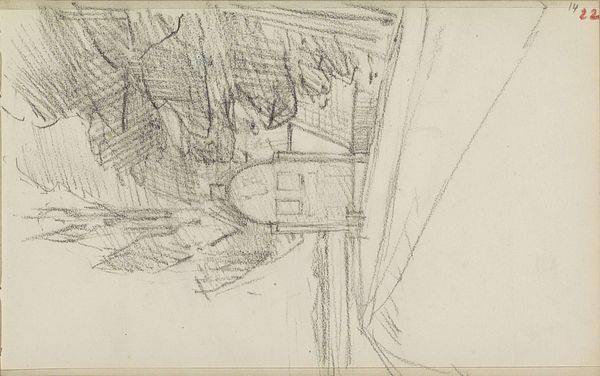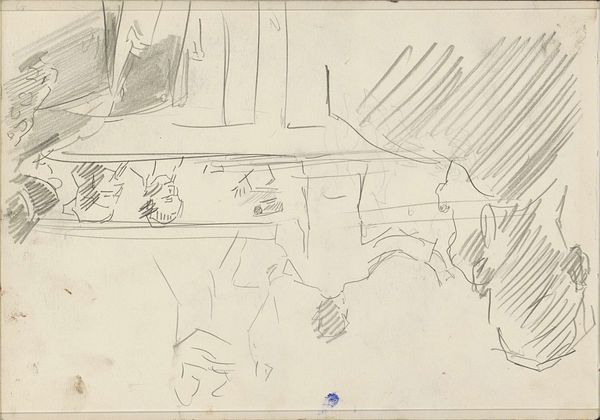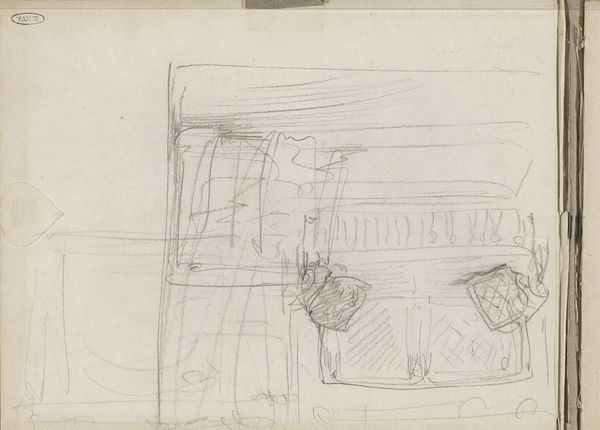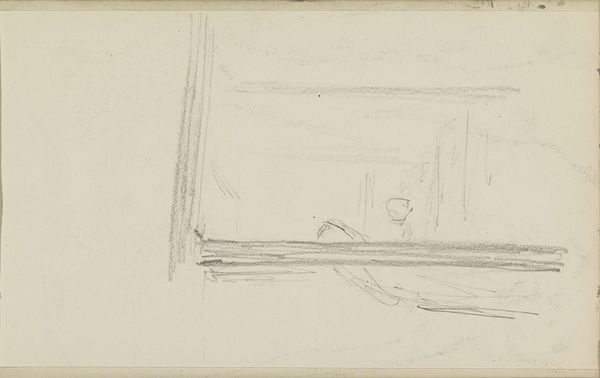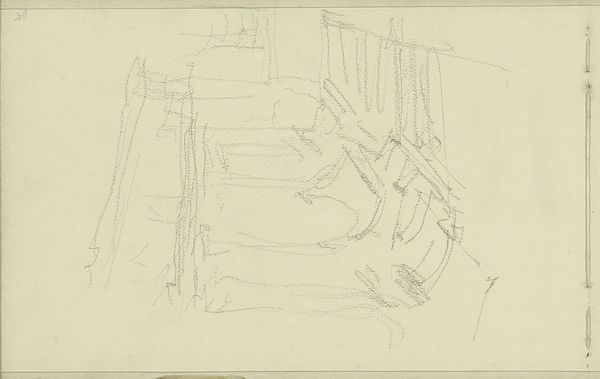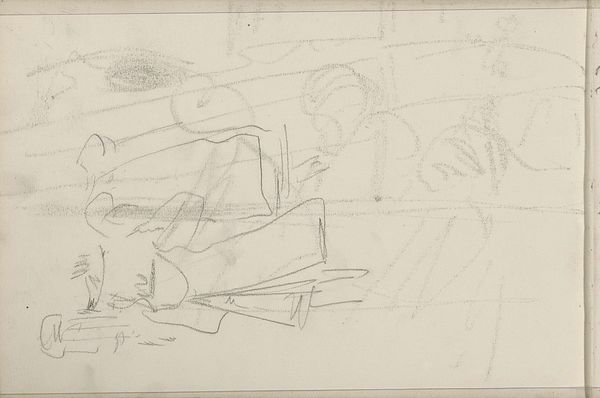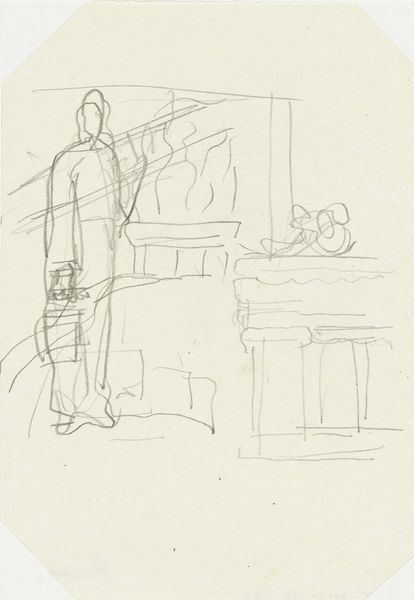
Ontwerp voor het interieur van de gereformeerde kerk te Vreeland c. 1905 - 1906
0:00
0:00
careladolphlioncachet
Rijksmuseum
drawing, pencil, architecture
#
drawing
#
aged paper
#
toned paper
#
light pencil work
#
sketch book
#
personal sketchbook
#
idea generation sketch
#
sketchwork
#
geometric
#
sketch
#
pencil
#
sketchbook drawing
#
storyboard and sketchbook work
#
sketchbook art
#
architecture
Copyright: Rijks Museum: Open Domain
Editor: We're looking at a pencil drawing, "Ontwerp voor het interieur van de gereformeerde kerk te Vreeland," or "Design for the Interior of the Reformed Church at Vreeland," created around 1905-1906 by Carel Adolph Lion Cachet. The drawing feels fragmented, like glimpses of architectural elements captured quickly. What do you make of this work? Curator: The formal elements immediately present themselves. Note the artist's use of line – primarily straight, hard lines define the architectural space, yet there is a notable absence of tonal variation. The composition directs the eye across the page, prompting one to examine the relationships between forms such as the apparent window and what might be sections of a pulpit. Editor: I see. So the relationship between the lines is key? Curator: Precisely. Observe how the sparse rendering and open space between the forms create an impression of depth, without the reliance on traditional shading techniques. Also consider that the lack of color information focuses attention exclusively on structure and form. Are we looking at a complete interior? Editor: I suppose not, since there are floating pieces without much context. It almost feels like a collection of shapes at times, rather than an actual space. Curator: This raises an interesting question about artistic intention. The drawing offers an opportunity to consider pure form independent from contextual interpretation, suggesting the intrinsic value of geometry, space, and line as standalone aesthetic entities. Editor: It's interesting to see it that way. Focusing just on the lines and their relationships reveals more about how the space could feel. Curator: Exactly. By divorcing the design from color and detail, the artist encourages the viewer to engage with the fundamental architectural shapes. We can appreciate the sketch for the pure interplay of lines and the forms that emerge, regardless of its historical significance. Editor: I'm definitely walking away with a fresh appreciation for line and composition. Thank you!
Comments
No comments
Be the first to comment and join the conversation on the ultimate creative platform.
